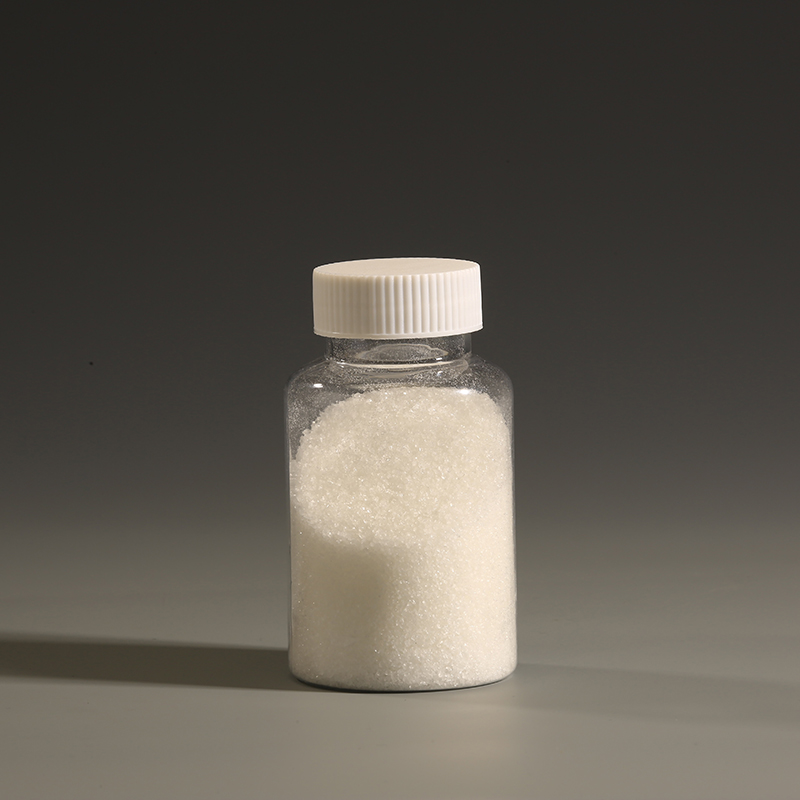Clorur de polidial·lildimetilamoni(PolyDADMAC) és un floculant polimèric catiònic àmpliament utilitzat i juga un paper important en el camp del tractament d'aigües. El PDADMAC s'utilitza normalment com a floculant i de vegades es combina amb algicides. Aquest article explicarà els avantatges i el valor d'aplicació pràctica del PolyDADMAC des dels aspectes del seu mecanisme d'acció, escenaris d'aplicació i estratègies específiques per millorar l'eficiència del tractament d'aigües.
Característiques bàsiques de PolyDADMAC
El poliDADMAC és un polímer d'alt pes molecular amb un gran nombre de grups catiònics a la seva estructura molecular, que pot adsorbir eficaçment partícules en suspensió i col·loides a l'aigua. Les seves principals característiques inclouen:
1. Forta cationicitatPot neutralitzar ràpidament les partícules suspeses amb càrrega negativa a l'aigua.
2. Bona solubilitat en aiguaÉs fàcil de dissoldre en aigua i és convenient per a l'aplicació in situ.
3. Estabilitat químicaPot mantenir un rendiment de floculació d'alta eficiència en diferents rangs de pH, ambients oxidants i ambients d'alt cisallament mecànic. El PDADMAC té una forta resistència al clor.
4. Baixa toxicitatCompleix amb els estàndards de protecció ambiental i és adequat per al tractament d'aigua potable.
Mecanisme d'acció de PolyDADMAC en el tractament d'aigua
Desestabilitza les partícules en suspensió i les substàncies en solució aquosa amb càrrega negativa a l'aigua i les flocula mitjançant la neutralització elèctrica i la formació de ponts d'adsorció. Té efectes significatius en la decoloració i l'eliminació de matèria orgànica.
PolyDADMACmillora l'eficiència del tractament d'aigua mitjançant els mecanismes següents:
1. Neutralització de càrrega
Les partícules i els col·loides en suspensió a l'aigua solen portar càrregues negatives, cosa que provoca repulsió mútua entre les partícules i dificulta la seva sedimentació. Els grups catiònics de PolyDADMAC poden neutralitzar ràpidament les càrregues negatives, reduir la repulsió electrostàtica entre les partícules i promoure la coagulació de les partícules.
2. Efecte pont
L'estructura molecular de cadena llarga del PolyDADMAC d'alta viscositat li permet formar un "pont" entre múltiples partícules, agregant partícules petites en flòculs més grans, millorant així l'eficiència de la sedimentació.
3. Enfortiment de l'efecte de captura neta
El PolyDADMAC pot enfortir l'"estructura de xarxa" formada pel coagulant inorgànic en el tractament de l'aigua per capturar eficaçment la matèria fina en suspensió, especialment en aigües amb alta terbolesa o altament contaminades.
Escenaris d'aplicació de PolyDADMAC
1. Tractament d'aigua potable
El PolyDADMAC s'utilitza com a floculant per eliminar la terbolesa, les partícules en suspensió i la matèria orgànica de l'aigua potable. Alhora, gràcies a la seva baixa toxicitat i a les seves característiques de protecció ambiental, pot complir amb els estàndards de seguretat de l'aigua potable.
2. Tractament d'aigües residuals
En el tractament d'aigües residuals municipals i industrials, el PolyDADMAC s'utilitza sovint per millorar el rendiment de deshidratació de fangs, reduir el contingut d'humitat del pastís de fang i reduir significativament els costos operatius.
3. Purificació d'aigua industrial
En les indústries energètica, petroquímica i altres, el PolyDADMAC s'utilitza per a la purificació d'aigua industrial, com ara aigua de refrigeració i aigua de calderes, per reduir els riscos d'incrustació i corrosió.
4. Indústria paperera i tèxtil
El PolyDADMAC s'utilitza com a ajuda de retenció i filtració per millorar la taxa de retenció de fibres i farcits en el procés de fabricació de paper, alhora que redueix el contingut de matèria en suspensió a les aigües residuals.
Estratègies per millorar l'eficiència del tractament d'aigua amb PolyDADMAC
1. Optimització del control de la dosi
La dosificació de PolyDADMAC està estretament relacionada amb la concentració, la distribució de la mida de les partícules i les característiques dels contaminants de les partícules en suspensió a l'aigua. L'optimització de la dosificació mitjançant proves de vidre pot maximitzar el seu efecte de floculació i evitar una dosificació excessiva que comporta un augment dels costos o contaminació secundària de l'aigua.
2. Efecte sinèrgic amb floculants inorgànics
L'ús de PolyDADMAC en combinació amb floculants inorgànics (com ara clorur de polialumini i sulfat d'alumini) pot millorar significativament l'efecte de floculació. Després que PolyDADMAC neutralitzi la càrrega superficial de les partícules, els floculants inorgànics formen flocs més grans mitjançant l'adsorció i la sedimentació.
3. Millorar el nivell d'automatització dels processos de tractament d'aigua
Amb l'ajuda de sistemes de control automatitzats, es pot aconseguir un seguiment i un ajust en temps real de la dosi de PolyDADMAC per fer front als canvis en l'eficiència del tractament causats per les fluctuacions de la qualitat de l'aigua.
4. Optimitzar les condicions d'agitació
Després d'afegir PolyDADMAC, una intensitat i un temps d'agitació adequats poden millorar la seva dispersibilitat i l'eficiència de la floculació. Una agitació excessiva pot fer que els flòculs es trenquin, mentre que una agitació insuficient reduirà l'efecte de barreja.
5. Ajustar el valor del pH
El PolyDADMAC funciona millor en condicions neutres o feblement alcalines. Quan es tracta aigua molt àcida o molt alcalina, ajustar el valor del pH de la massa d'aigua pot millorar significativament el seu efecte de floculació.
Avantatges de PolyDADMAC
1. Alta eficiènciaFormació ràpida de flocs per millorar l'eficiència de la separació sòlid-líquid.
2. Àmplia gamma d'aplicacionsAplicable a diverses qualitats d'aigua, especialment aigües amb alta terbolesa i alt contingut orgànic.
3. Protecció del medi ambientBaixa toxicitat i biodegradabilitat, d'acord amb els requisits de protecció ambiental.
Com a altament eficientfloculantEl PolyDADMAC té avantatges d'aplicació significatius en el camp del tractament d'aigües a causa de la seva forta cationicitat, bona solubilitat en aigua i àmplia aplicabilitat. Mitjançant una optimització raonable del procés i estratègies operatives, es pot millorar encara més l'eficiència del tractament en la purificació d'aigua potable, aigües residuals i aigües industrials.
Data de publicació: 06-12-2024





